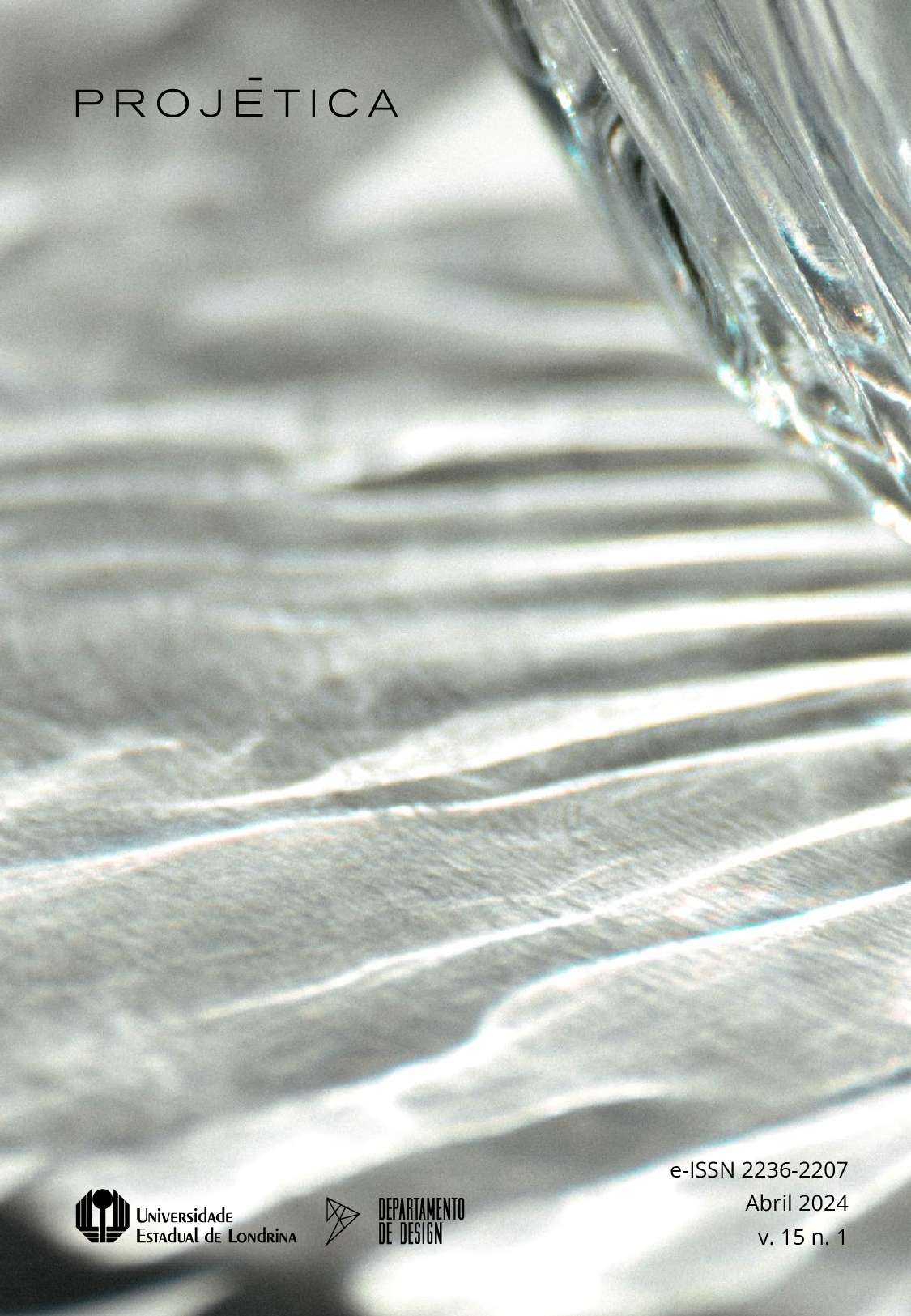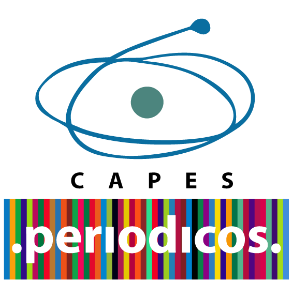On Things that Make us Feel Good
contributions to sensory design and to the project for the senses beyond sight
DOI:
https://doi.org/10.5433/2236-2207.2024.v15.n1.48191Keywords:
sensorial design, emotional design, good feelingAbstract
This article questions the predominance of vision in the interaction with the world, exploring the field of Sensory Design beyond visual emphasis. The study investigated how this approach transcends visual perception to influence users' emotional experience in the face of the multisensorial nature of objects. To achieve this, a systematic literature review was conducted on Scopus, resulting in 12 articles (2011-2022). The analysis highlights the user-object interaction, integration of sensory systems, stimuli, and emotional reactions. The synthesis underscores the importance of exploring perceptual modalities to promote well-being, establishing multisensory approach as an essential tool for inclusive designs. In conclusion, this study expands the understanding of senses in design, advocating techniques that consider the diversity of human perceptual experiences.
Downloads
References
BALINT, Tibor S.; HALL, Asheley. Humanly space objects: perception and connection with the observer. Acta Astronautica, Elmsford, NY, v. 110, p. 129–144, maio, 2015. Disponível em: https://www.sciencedirect.com/science/article/abs/pii/S0094576515000144. Acesso em: 10 jul. 2022. DOI: https://doi.org/10.1016/j.actaastro.2015.01.010
CHANDLER, Daniel; MUNDAY, Rod. A dictionary of media and communication. Oxford: Oxford University Press, 2011. DOI: https://doi.org/10.1093/acref/9780199568758.001.0001
D’IGNAZIO, Catherine; KLEIN, Lauren F. On rational, scientific, objective viewpoints from mythical, imaginary, impossible standpoints. D'IGNAZIO, Catherine; KLEIN, Lauren. Feminism. Cambridge, MA: MIT Press, 2020. p. 73-96. Disponível em: https://data-feminism.mitpress.mit.edu/pub/5evfe9yd/release/5 Acesso em: 10 jul. 2022. DOI: https://doi.org/10.7551/mitpress/11805.003.0005
GAYLER, Tom; SAS, Corina; KALNIKAITE, Valva. Exploring the design space for human-food-technology interaction: an approach from the lens of eating experiences. ACM Transactions on Computer-Human Interaction, New York, US, v. 29, n. 2, 2022. Disponível em: https://dl.acm.org/doi/fullHtml/10.1145/3484439. Acesso em: 10 jul. 2022. DOI: https://doi.org/10.1145/3484439
GIAMBATTISTA, Angela. Designing care. How design can improve medical products for a therapeutic wellbeing. Design Journal, London, v. 20, p. S2158–S2167, 2017. Suplemento 1. Disponível em: https://www.tandfonline.com/doi/pdf/10.1080/14606925.2017.1352732. Acesso em: 15 jul. 2022. DOI: https://doi.org/10.1080/14606925.2017.1352732
JONSSON, Kristoffer; KJELLGREN, Anette. Promising effects of treatment with flotation-REST (restricted environmental stimulation technique) as an intervention for generalized anxiety disorder (GAD): a randomized controlled pilot trial. BMC Complementary and Alternative Medicine, United Kingdom, v. 16, p. 1-12, 2016. DOI: https://doi.org/10.1186/s12906-016-1089-x
KANDEL, Eric R.; SCHWARTZ, James H.; JESSEL, Thomas M.; SIEGELBAUM, Steven A.; HUDSPETH, A. James. Princípios de neurociências. 5. ed. Tradução de Ana Lúcia Severo Rodrigues. Porto Alegre: AMGH Editora, 2014.
KENNING, Gail; TREADAWAY, Cathy. Designing for dementia: Iterative grief and transitional objects. Design Issues, Chicago, ILL, v. 34, n. 1, p. 42–53, 2018. Disponível em: https://direct.mit.edu/desi/article-abstract/34/1/42/69298/Designing-for-Dementia-Iterative-Grief-and. Acesso em: 15 jul. 2022. DOI: https://doi.org/10.1162/DESI_a_00475
LUDDEN, Geke Dina Simone; KUDROWITZ, Barry M.; SCHIFFERSTEIN, Hendrik N. J.; HEKKERT, Paul. Surprise and humor in product design designing sensory metaphors in multiple modalities. Humor, Berlin, DE, v. 25, n. 3, p. 285–309, 2012. Disponível em: https://www.degruyter.com/document/doi/10.1515/humor-2012-0015/html. Acesso em: 15 jul. 2022. DOI: https://doi.org/10.1515/humor-2012-0015
MAGRINI, Massimo; CURZIO, Olivia; CARBONI, Andrea; MORONI, Davide; SALVETTI, Ovidio; MELANI, Alessandra. Augmented interaction systems for supporting autistic children. Evolution of a multichannel expressive tool: The semi project feasibility study. Applied Sciences, Switzerland, v. 9, n. 15, 2019. Disponível em: https://www.mdpi.com/2076-3417/9/15/3081. Acesso em: 10 jul. 2022. DOI: https://doi.org/10.3390/app9153081
NEVES, Juliana Duarte. Sobre projetos para todos os sentidos: contribuições da arquitetura para o desenvolvimento de projetos dirigidos aos demais sentidos além da visão. 2011. 146 f. Dissertação (Mestrado em Design) — Departamento de Artes & Design, Pontifícia Universidade Católica do Rio de Janeiro, RJ, Rio de Janeiro, 2011. Disponível em: https://www.maxwell.vrac.puc-rio.br/colecao.php?strSecao=resultado&nrSeq=19246@1. Acesso em: 15 jul. 2022.
PFEIFFER, Beth A.; KOENIG, Kristie; KINNEALEY, Moya; SHEPPARD, Megan; HENDERSON, Lorrie. Effectiveness of sensory integration interventions in children with autism spectrum disorders: a pilot study. American Journal of Occupational Therapy, New York, v. 65, n. 1, p. 76–85, 2011. Disponível em: https://pubmed.ncbi.nlm.nih.gov/21309374/. Acesso em: 10 jul. 2022. DOI: https://doi.org/10.5014/ajot.2011.09205
QIU, Shi; HU, Jun; HAN, Ting; OSAWA, Hirotaka; RAUTERBERG, Matthias. An evaluation of a wearable assistive device for augmenting social interactions. IEEE Xplore, New York, US, v. 8, p. 164661–164677, 2020. Disponível em: https://ieeexplore.ieee.org/document/9187606 Acesso em: 10 jul. 2022. DOI: https://doi.org/10.1109/ACCESS.2020.3022425
TAJADURA-JIMÉNEZ, Ana; VÄLJAMÄE, Aleksander; KUUSK, Kristi. Altering one's body-perception through E-Textiles and haptic metaphors. Frontiers in Robotics and AI, Lausanne, SW, v. 7, p. 7, 2020. DOI: https://doi.org/10.3389/frobt.2020.00007 DOI: https://doi.org/10.3389/frobt.2020.00007
TSAI, Shu-Yng; HONG, Syuan-Yuan. Influence of multisensory stimulation environmental designs for day services and healing environment of elderly people with dementia. Sensors and Materials, Amsterdam, NL, v. 31, n. 5, p. 1739–1749, 2019. Disponível em: https://pdfs.semanticscholar.org/e215/d246412754026371fb8b7bfe26556834a731.pdf Acesso em: 15 jul. 2022. DOI: https://doi.org/10.18494/SAM.2019.2281
VAZ, Roberto; FREITAS, Diamantino; COELHO, António. Visiting museums from the perspective of visually impaired visitors: experiences and accessibility resources in portuguese museums. The International Journal of the Inclusive Museum (Journal), Groningen, NL, v. 14, n. 1, p. 71–93, 2021. Disponível em: https://sigarra.up.pt/fdup/pt/pub_geral.pub_view?pi_pub_base_id=601025. Acesso em: 10 jul. 2022. DOI: https://doi.org/10.18848/1835-2014/CGP/v14i01/71-93
Downloads
Published
How to Cite
Issue
Section
License
Copyright (c) 2024 Rafaela Borges, Claudia Mourthé , Vera Damazio

This work is licensed under a Creative Commons Attribution 4.0 International License.
Projética está licenciada sob a Creative Commons Attribution CC-BY 4.0 International. Os autores detém os direitos autorais e concedem à revista o direito de exclusividade de primeira publicação.
Os autores dos trabalhos aprovados autorizam Projética a, após a publicação, ceder seu conteúdo para reprodução em indexadores de conteúdo, bibliotecas virtuais e similares.
Os autores assumem que os textos submetidos à publicação são de sua criação original, responsabilizando-se inteiramente por seu conteúdo em caso de eventual impugnação por parte de terceiros. As opiniões emitidas pelos autores dos artigos são de sua exclusiva responsabilidade.
A revista se reserva o direito de efetuar, nos originais, alterações de ordem normativa, ortográfica e gramatical, com vistas a manter o padrão culto da língua e a credibilidade do veículo. Respeitará, no entanto, o estilo de escrever dos autores. Alterações, correções ou sugestões de ordem conceitual serão encaminhadas aos autores, quando necessário. Nesses casos, os artigos, depois de adequados, deverão ser submetidos a nova apreciação. As provas finais não serão encaminhadas aos autores.











